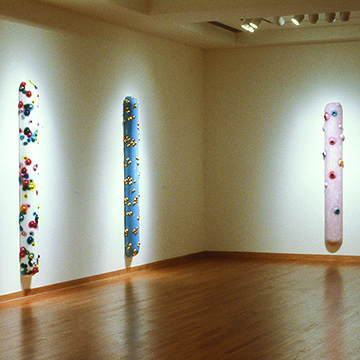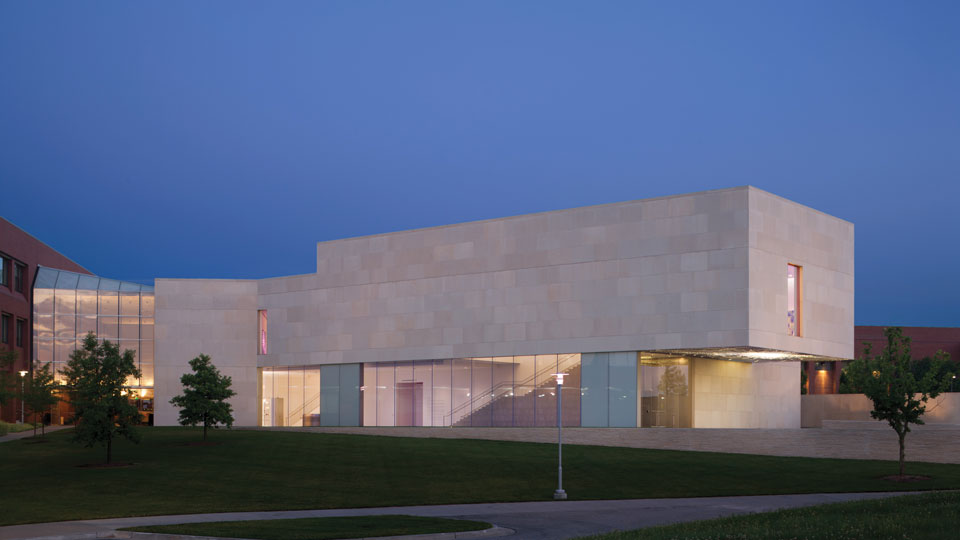John Torreano · Material World
John Torreano's monumentally scaled monochromatic fields, sentry columns, and crosses studded with wooden balls and glittering gems are at once conceptually provocative and drop-dead gorgeous. Beauty is a resurgent cultural concept these days, as social critics and art historians try again to locate meaning in aesthetic experience that transcends the everyday, ephemeral or esoteric. But Torreano's art has always sought to balance aesthetic theory with real-world notions of beauty. Most often, he does this by emphasizing the inherent contradiction between the physicality of his utilitarian materials and the otherworldly evanescence of his painterly fields.
For the past 30 years John Torreano has challenged such modernist dogma as essentialism (i.e. the flatness of painting) or the idea of art as “container,” with a concept of meaning determined by a multiplicity of points of view, or, as he would say, "There are many stars. There are many gods." In his effort to expand these boundaries he has enlisted a wide variety of unconventional materials and means, including acrylic gems, wood spheres, krylon paint, polyhedrals and snubnose moldings, all in an effort to reconstruct a formalist vocabulary. Armed with these tools a great wit and a physical sensitivity to color and material, his work confronts the viewer with many of the oxymoronic binaries of contemporary art and culture. In addition to object making, Torreano has given numerous comedic performances to that same end.
John Torreano was born in Flint, Michigan, in 1941. He currently lives and works in New York, where he heads the NYU graduate program in studio art. In 1967 he received an MFA from Ohio State University, Columbus. He earned a BFA from Cranbrook Academy of Art, Bloomfield Hills, MI, in 1963, and in 1961 he graduated with an AA from Flint Community Junior College, Michigan. Torreano has exhibited his work in numerous museums and galleries, and his achievements have been recognized with grants from the Guggenheim Memorial Foundation Fellowship and the National Endowment for the Arts, among others.
The exhibition gallery guide features an essay by Terrie Sultan, Curator of Contemporary Art, Corcoran Gallery of Art, Washington, D.C.






